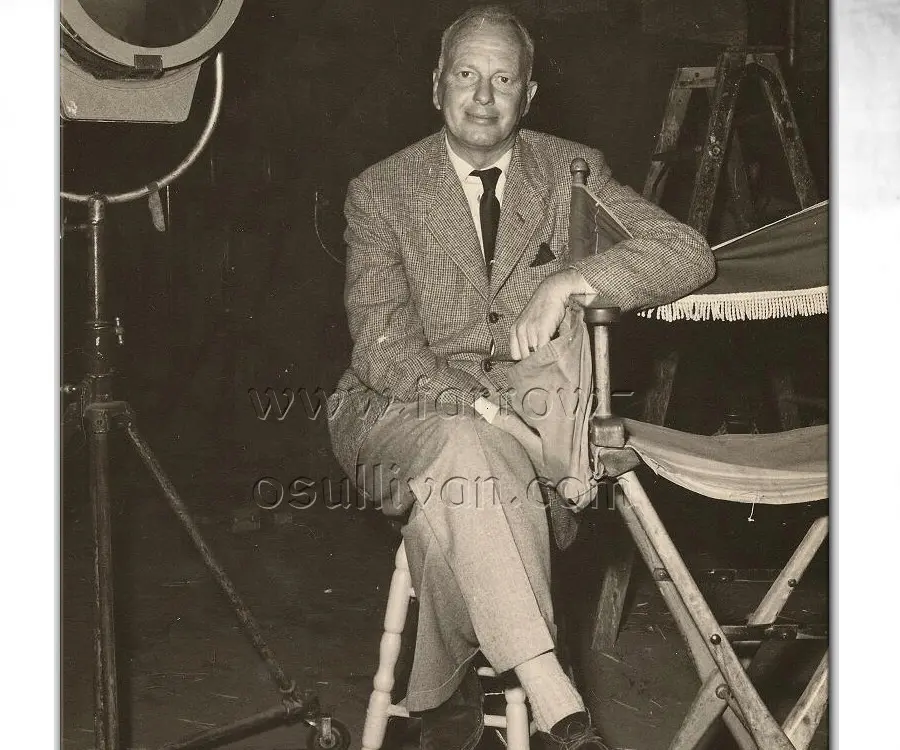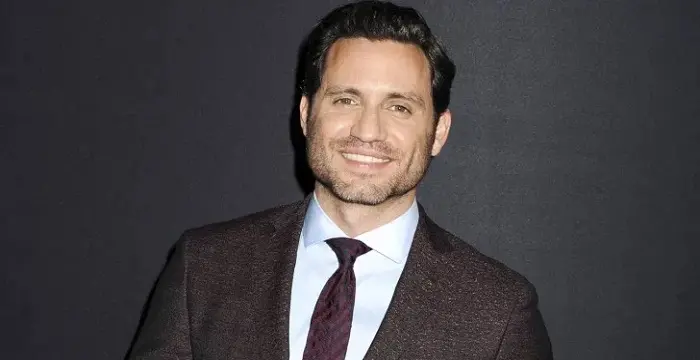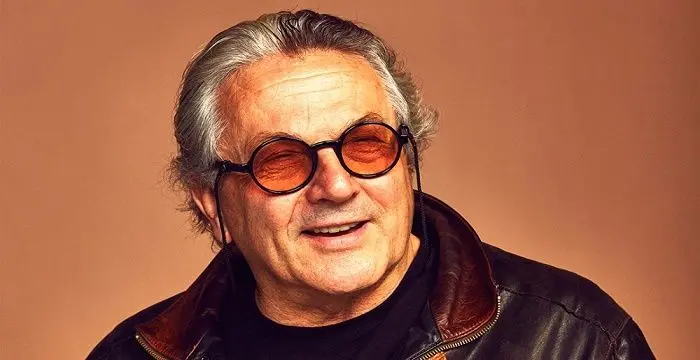
John Farrow - Movie Producers, Career and Facts
John Farrow's Personal Details
John Villiers Farrow was an eminent Australian-born American film director, screenwriter and producer
| Information | Detail |
|---|---|
| Birthday | February 10, 1904 |
| Died on | January 27, 1963 |
| Nationality | Australian, American |
| Famous | Film & Theater Personalities, Directors, T V & Movie Producers, Film Director, Movie Producers, Producer, Screenwriter, T V |
| Spouses | Felice Lewin (1924-1934) |
| Known as | John Villiers Farrow |
| Childrens | John Charles (born 1946).||, Mia (born 1945), Patrick Joseph (1942–2009), Prudence (born 1948), Stephanie (born 1949), Tisa (born 1951) Michael Damien |
| Birth Place | Sydney, Australia |
| Born Country | Australia |
| Gender | Male |
| Father | Joseph Farrow |
| Mother | Lucy Villiers (née Savage) |
| Sun Sign | Aquarius |
| Born in | Sydney, Australia |
| Famous as | Film Director, Producer, Screenwriter |
| Died at Age | 58 |
// Famous Screenwriter
Kathryn Eastwood
Kathryn Eastwood, born as Kathryn Ann Reeves, is an American actress and screenwriter from America. Check out this biography to know about her childhood, family life, achievements and fun facts about her.
Adam Sandler
Adam Sandler is an American actor and comedian known for his roles in films like ‘Punch-Drunk Love’ and ‘The Wedding Singer’. This biography of Adam Sandler provides detailed information about his childhood, life, achievements, works & timeline.
Nikolaj Coster-Waldau
Nikolaj Coster-Waldau is a Danish actor, screenwriter, and producer. Check out this biography to know about his birthday, childhood, family life, achievements and fun facts about him.
John Farrow's photo
Who is John Farrow?
John Villiers Farrow was an eminent Australian-born American film director, screenwriter and producer who made immensely popular films within the film noir, western, and historical adventure genres that were trending in his era. A man of many talents, he was a gifted individual who excelled in various fields. His parents were of English ancestry. He began his career as a sailor and travelled across the Pacific region, writing poems and short stories in his spare time. Gradually he found his way into Hollywood and landed himself a job as a script consultant. Over a short period of time, he established himself as a renowned screenwriter. Throughout his long illustrious Hollywood career, he wrote many successful screenplays and directed over 35 films. Sometimes he delved into production as well. He worked with big studios like Warner Bros, RKO, and Paramount Pictures. He was also a fairly successful writer and wrote as many as seven books that include novels, biographies, history and poetry. However, he was most popular for his films, and some of his films such as ‘Wake Island’ (1942) and ‘Around the World in 80 Days’ (1956) earned him the Oscar Best Director nomination and the Oscar Best Screenplay Award respectively.
// Famous Producer
Michael Schur
Michael Schur is an American television actor, producer, and writer. Check out this biography to know about his birthday, childhood, family life, achievements and fun facts about him.
Ashton Kutcher
Ashton Kutcher is an American actor, model and a producer. This biography profiles his childhood, life, acting career, achievements and timeline.
Chad McQueen
Chad McQueen is an American actor, film producer, race car driver and martial artist Check out this biography to know about his childhood, family life, achievements and fun facts about him.
Childhood & Early Life
Farrow was born on 10 February, 1904 in Sydney, Australia. He was the son of Lucy Villiers (née Savage), a dressmaker and Joseph Farrow, a tailor's trimmer. He lost his mother when he was only three years old.
His parents were of English descent. He was educated at Newtown Public School and Fort Street Boys' High School in Sydney. He became a sailor at an early age and travelled across the Pacific region, including Fiji and Hawaii.
When he reached the U.S., he enrolled at the Jesuits' St Ignatius College, University of San Francisco. However, he discontinued the course soon after.
Upon his arrival in Hollywood, it is believed that he made-up his educational credentials, claiming he had attended Newington College in Sydney, Australia, Winchester College in England and the US Naval Academy.
Career
Farrow embarked on his career as a writer while working as a sailor. Later, a chance encounter with film-maker Robert J. Flaherty aroused his interest in screenwriting.
He found his way into Hollywood and in 1927, landed himself a job as a script consultant and technical adviser. By then, he was a fairly successful poet and short story writer. Very soon, he established himself as a distinguished screenwriter in Hollywood.
He worked for DeMille Productions, Paramount Pictures, and RKO Radio Pictures Inc. and wrote the scripts for films like ‘Ladies of the Mob’ (1928) and ‘The Wolf Song’ (1929).
In 1932, he wrote a novel, ‘Laughter Ends’ and visited England to work as a Writer (English version) and Assistant Director on G. W. Pabst's film ‘Don Quixote’ (1933).
On 27 January 1933, he was arrested in the U.S. on grounds of entering the country as an illegal immigrant and breaching his visa. He was threatened with deportation but was set free the following year.
Recovering from the legal set-back, he wrote and directed ‘Tarzan Escapes’ (1936) but since the film was afterwards re-written and re-shot, his contribution was uncredited. Later that year, he signed a contract with Warner Bros and made his directorial debut with ‘Men in Exile’ (1937). He followed it up with ‘West of Shanghai’, and ‘She Loved a Fireman’.
Following this, he visited Europe to give lectures on Father Damien, about whom he had authored a book and received a Papal knighthood. On his return he directed ‘The Invisible Menace’, ‘Little Miss Thoroughbred’, ‘Broadway Musketeers’ and ‘My Bill’ for Warners in 1938.
After directing ‘Women in the Wind’ (1939), he moved on to RKO the same year and directed B-films like, ‘Full Confession’, ‘The Saint Strikes Back’, ‘Five Came Back’, ‘Reno’, and ‘Sorority House’. Some of these were highly successful. In 1940, he directed two films ‘Married and in Love’ and ‘A Bill of Divorcement’.
Despite his flourishing career and blossoming family, he was keen to take part in World War II. In November 1939, he enlisted in the Canadian Navy at Vancouver. He was appointed Lieutenant in March 1940 and assigned to Naval History and the Controller of Information Unit.
Eventually, he contracted typhus fever and was declared unfit by the Canadian Navy. In 1943, he served as technical consultant for the Royal Canadian Navy show. Later in 1945, he was required to travel to Britain with the Director of Special Services.
He resumed his film making career in 1942 by signing a long term contract with Paramount Pictures and went on to become one of the leading directors for the studio.
He began his tenure at Paramount by directing the patriotic film ‘Wake Island’ (1942), which earned him an Oscar nomination. It was his biggest hit and the success of the film led him to make several other World War II movies such as ‘Commandos Strike at Dawn’ (1942), ‘China’ (1943), ‘The Hitler Gang’ (1944), ‘You Came Along (1945)’, etc.
These were followed by an adventure film ‘Two Years before the Mast’ (1946) and a western ‘California’ (1947). He also directed ‘Easy Come, Easy Go’, ‘Blaze of Noon’, and crime drama ‘Calcutta’, all in 1947.
The following year in 1948, he produced and directed the classic film noir ‘The Big Clock’, an adaptation of Kenneth Fearing’s novel. He also directed ‘Beyond Glory’ and ‘Night Has a Thousand Eyes’ in 1948. His last film of the decade was ‘Alias Nick Beal’ and the comedy ‘Red, Hot and Blue’.
In 1950, he directed ‘Copper Canyon’ and ‘Where Danger Lives’. The following year he made ‘His Kind of Woman’ and ‘Submarine Command’. Films like ‘Ride, Vaquero!’, ‘Plunder of the Sun’, ‘Botany Bay’ were made in 1953.
In 1953 he also directed ‘Hondo’, which was shot in 3-D. ‘A Bullet is Waiting’ (1954) and ‘The Sea Chase’ (1955) followed next.
In 1956, he took time off to co-script the adventure-comedy ‘Around the World in 80 Days’, which won him his only Oscar. His last few films failed to create an impact. He remade ‘Five Came Back’ as ‘Back from Eternity’ in 1956 and directed ‘The Unholy Wife’ in 1957 followed by ‘John Paul Jones’ in 1959, which was his last film before retirement.
Major Work
Farrow’s greatest literary work was ‘Pageant of the Popes’ (1942) which contained a history of the papacy and won him the Catholic Literary Prize. His other significant literary works were – novels: ‘The Bad Ones’ (1930) and ‘Laughter Ends’ (1933), and biographies: ‘Damien the Leper’ (1937) and ‘Story of Sir Thomas More’ (1956).
He wrote the screenplay for ‘Around the World in 80 Days’, a 1956 Technicolor epic action adventure comedy film which won five Academy Awards including Best Screenplay and Best Picture.
His film ‘Wake Island’ (1942) tells the story of the U.S. military barracks on Wake Island and the attack by the Japanese following the attack on Pearl Harbour. The film earned him the Academy Award nomination for Best Director.
Awards & Achievements
Farrow was honoured with several decorations and awards throughout his lifetime. Starting in 1937, he received the Knight Grand Cross of the Order of the Holy Sepulchre by Pope Pius XI.
His film ‘Wake Island’ (1942) was a huge success. He won the New York Critics Award for Best Direction and was also received Academy Awards nomination in Best Director category.
In 1951, he received the Order of St John of Jerusalem and in 1953 he became Honorary Commander of the Order of the British Empire (CBE).
In 1957, he won the prestigious Academy Award and the Writers Guild of America Award for Best Screenplay (adapted) for ‘Around the World in Eighty Days’.
He has a Star on the Hollywood Walk of Fame at 6304 Hollywood Blvd.
Personal Life & Legacy
Farrow got married twice. First, he married Felice Lewin in 1924 and had a daughter with her the following year. The couple eventually got divorced in 1934.
In 1934, he got engaged to actress Maureen O'Sullivan. The couple married on 12 September, 1936 after he converted to Catholicism. He became an American citizen in July 1947.
With Maureen, he had seven children; four daughters, who grew up to become celebrated actresses, Mia (born 1945), Prudence (born 1948), Stephanie (born 1949), Tisa (born 1951); and three sons, Michael Damien (1939–1958), Patrick Joseph (1942–2009), and John Charles (born 1946).
He died on 27 January, 1963 from a heart attack in Beverly Hills, California. He was buried at the Holy Cross Cemetery, Culver City.
Trivia
His daughter Mia made her film debut in his final direction, ‘John Paul Jones’ (1959).
He was the ex-father-in-law of Frank Sinatra and André Previn.
// Famous Movie Producers
Michael Schur
Michael Schur is an American television actor, producer, and writer. Check out this biography to know about his birthday, childhood, family life, achievements and fun facts about him.
Chad McQueen
Chad McQueen is an American actor, film producer, race car driver and martial artist Check out this biography to know about his childhood, family life, achievements and fun facts about him.
Nikolaj Coster-Waldau
Nikolaj Coster-Waldau is a Danish actor, screenwriter, and producer. Check out this biography to know about his birthday, childhood, family life, achievements and fun facts about him.
John Farrow's awards
| Year | Name | Award |
|---|---|---|
Academy Awards(Oscars) | ||
| 1957 | Best Writing, Best Screenplay - Adapted | Around the World in 80 Days (1956) |
John Farrow biography timelines
- // 10th Feb 1904Farrow was born on 10 February, 1904 in Sydney, Australia. He was the son of Lucy Villiers (née Savage), a dressmaker and Joseph Farrow, a tailor's trimmer. He lost his mother when he was only three years old.
- // 1924 To 1934Farrow got married twice. First, he married Felice Lewin in 1924 and had a daughter with her the following year. The couple eventually got divorced in 1934.
- // 1927He found his way into Hollywood and in 1927, landed himself a job as a script consultant and technical adviser. By then, he was a fairly successful poet and short story writer. Very soon, he established himself as a distinguished screenwriter in Hollywood.
- // 1928 To 1929He worked for DeMille Productions, Paramount Pictures, and RKO Radio Pictures Inc. and wrote the scripts for films like ‘Ladies of the Mob’ (1928) and ‘The Wolf Song’ (1929).
- // 1932 To 1933In 1932, he wrote a novel, ‘Laughter Ends’ and visited England to work as a Writer (English version) and Assistant Director on G. W. Pabst's film ‘Don Quixote’ (1933).
- // 27th Jan 1933On 27 January 1933, he was arrested in the U.S. on grounds of entering the country as an illegal immigrant and breaching his visa. He was threatened with deportation but was set free the following year.
- // 1936 To 1937Recovering from the legal set-back, he wrote and directed ‘Tarzan Escapes’ (1936) but since the film was afterwards re-written and re-shot, his contribution was uncredited. Later that year, he signed a contract with Warner Bros and made his directorial debut with ‘Men in Exile’ (1937). He followed it up with ‘West of Shanghai’, and ‘She Loved a Fireman’.
- // 1937Farrow was honoured with several decorations and awards throughout his lifetime. Starting in 1937, he received the Knight Grand Cross of the Order of the Holy Sepulchre by Pope Pius XI.
- // 1938Following this, he visited Europe to give lectures on Father Damien, about whom he had authored a book and received a Papal knighthood. On his return he directed ‘The Invisible Menace’, ‘Little Miss Thoroughbred’, ‘Broadway Musketeers’ and ‘My Bill’ for Warners in 1938.
- // 1939 To 1940After directing ‘Women in the Wind’ (1939), he moved on to RKO the same year and directed B-films like, ‘Full Confession’, ‘The Saint Strikes Back’, ‘Five Came Back’, ‘Reno’, and ‘Sorority House’. Some of these were highly successful. In 1940, he directed two films ‘Married and in Love’ and ‘A Bill of Divorcement’.
- // Nov 1939 To Mar 1940Despite his flourishing career and blossoming family, he was keen to take part in World War II. In November 1939, he enlisted in the Canadian Navy at Vancouver. He was appointed Lieutenant in March 1940 and assigned to Naval History and the Controller of Information Unit.
- // 1942He resumed his film making career in 1942 by signing a long term contract with Paramount Pictures and went on to become one of the leading directors for the studio.
- // 1942His film ‘Wake Island’ (1942) tells the story of the U.S. military barracks on Wake Island and the attack by the Japanese following the attack on Pearl Harbour. The film earned him the Academy Award nomination for Best Director.
- // 1942His film ‘Wake Island’ (1942) was a huge success. He won the New York Critics Award for Best Direction and was also received Academy Awards nomination in Best Director category.
- // 1943 To 1945Eventually, he contracted typhus fever and was declared unfit by the Canadian Navy. In 1943, he served as technical consultant for the Royal Canadian Navy show. Later in 1945, he was required to travel to Britain with the Director of Special Services.
- // 1948The following year in 1948, he produced and directed the classic film noir ‘The Big Clock’, an adaptation of Kenneth Fearing’s novel. He also directed ‘Beyond Glory’ and ‘Night Has a Thousand Eyes’ in 1948. His last film of the decade was ‘Alias Nick Beal’ and the comedy ‘Red, Hot and Blue’.
- // 1950 To 1953In 1950, he directed ‘Copper Canyon’ and ‘Where Danger Lives’. The following year he made ‘His Kind of Woman’ and ‘Submarine Command’. Films like ‘Ride, Vaquero!’, ‘Plunder of the Sun’, ‘Botany Bay’ were made in 1953.
- // 1951 To 1953In 1951, he received the Order of St John of Jerusalem and in 1953 he became Honorary Commander of the Order of the British Empire (CBE).
- // 1956He wrote the screenplay for ‘Around the World in 80 Days’, a 1956 Technicolor epic action adventure comedy film which won five Academy Awards including Best Screenplay and Best Picture.
- // 1957In 1957, he won the prestigious Academy Award and the Writers Guild of America Award for Best Screenplay (adapted) for ‘Around the World in Eighty Days’.
- // 1959His daughter Mia made her film debut in his final direction, ‘John Paul Jones’ (1959).
- // 27th Jan 1963He died on 27 January, 1963 from a heart attack in Beverly Hills, California. He was buried at the Holy Cross Cemetery, Culver City.
// Famous T V
Michael Schur
Michael Schur is an American television actor, producer, and writer. Check out this biography to know about his birthday, childhood, family life, achievements and fun facts about him.
Chad McQueen
Chad McQueen is an American actor, film producer, race car driver and martial artist Check out this biography to know about his childhood, family life, achievements and fun facts about him.
Nikolaj Coster-Waldau
Nikolaj Coster-Waldau is a Danish actor, screenwriter, and producer. Check out this biography to know about his birthday, childhood, family life, achievements and fun facts about him.
Tom Ackerley
Tom Ackerley is an English film and television director and film producer. Check out this biography to know about her birthday, childhood, family life, achievements and fun facts about her.
Matthew McConaughey
Matthew McConaughey is an acclaimed American actor. This biography profiles his childhood, film career, works, life, achievements and timeline.
George Miller
George Miller is a noted Australian film director, screen play writer and producer. Check out this biography to know about his birthday, childhood, family life, achievements fun facts about him.
John Farrow's FAQ
What is John Farrow birthday?
John Farrow was born at 1904-02-10
When was John Farrow died?
John Farrow was died at 1963-01-27
Where was John Farrow died?
John Farrow was died in Beverly Hills, California, U.S.
Which age was John Farrow died?
John Farrow was died at age 58
Where is John Farrow's birth place?
John Farrow was born in Sydney, Australia
What is John Farrow nationalities?
John Farrow's nationalities is Australian, American
Who is John Farrow spouses?
John Farrow's spouses is Felice Lewin (1924-1934)
Who is John Farrow childrens?
John Farrow's childrens is John Charles (born 1946).||, Mia (born 1945), Patrick Joseph (1942–2009), Prudence (born 1948), Stephanie (born 1949), Tisa (born 1951) Michael Damien
Who is John Farrow's father?
John Farrow's father is Joseph Farrow
Who is John Farrow's mother?
John Farrow's mother is Lucy Villiers (née Savage)
What is John Farrow's sun sign?
John Farrow is Aquarius
How famous is John Farrow?
John Farrow is famouse as Film Director, Producer, Screenwriter









